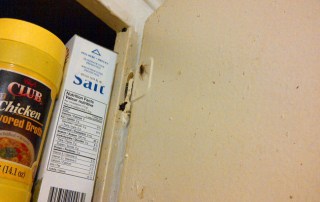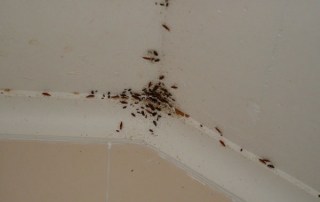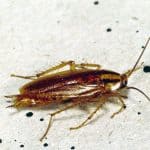The German cockroach is the smallest and most common of the cockroaches found in Canada.It is also called cockroach, roach or cockroach.It can measure 11 to 14 mm.Its body is rather oval and flattened, brown in color, with two darker brown stripes on the front of the thorax.It is recognized by two long antennas curved backward and by its two pairs of wings that cover its abdomen.
Latin Name: Blatella Germanica
Description:The German cockroach is the smallest and most common of the cockroaches found in Canada.It is also called cockroach, roach or cockroach.It can measure from 11 to 14 mm.Its body is rather oval and flattened, brown in color, with two stripes darker brown on the front of the thorax.It is recognized by two long antennae curved backwards and by its two pairs of wings that cover its abdomen. These wings are used to glide or to turn around when on its back. The young cockroaches resemble the adults but smaller and without wings.
Reproduction: The female can lay from 8 to 40 eggs in a small bag that she carries with her.These small bags are called oetèques.When the eggs have matured well, after about a month, she deposits the bag in a crack or near a wall. The eggs will hatch a few days later.a female of this species can produce 4 to 8 egg cases during her life span of up to 6 months.under the right conditions, their life cycle is 2 to 5 months, which allows up to 3 generations per year. A female that lives 6 months could produce 20,000 to 30,000 new cockroaches after a year.
Habits: It is found in homes, restaurants, hotels,food warehouses,ships and any place where it finds food, warm moistureand shelter.People often believe that cockroaches are only found in dirty placesbut this is not true. As long as they find what they are looking for, they will populate the area. Most of the time, cockroaches stay hidden during the day and come out at night in search of food.They will eat just about anything, but they prefer starchy foods.They can be found anywhere that water and food are accessible. It is a nuisance insect because it travels from sewers to inhabited areas of homes and can transmit diseases and worms to humans.It picks up germs on its feet and carries them to human food.
Prevention: It is quite easy to recognize the unpleasant odor that betrays an infestation.This smell is communicated to objects they touch and infested food.Often the presence of shed skins and feces signals their presence. It is important not to leave food lying around, to clean out containers with sugary drinks, beer bottles and to store garbage outside the house. Treatments can be applied but should be administered by specialists to ensure that all sources of infestation are treated.




